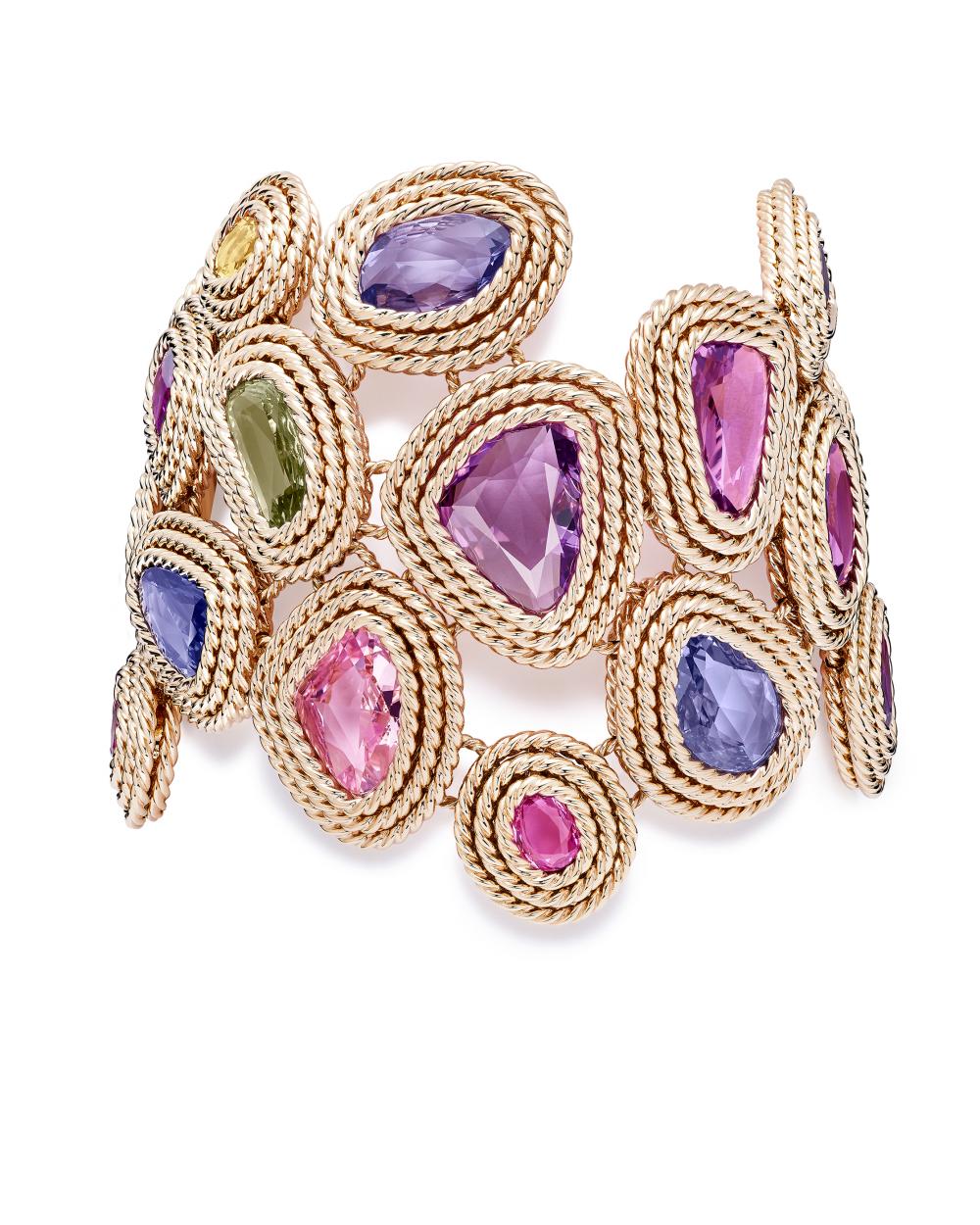A part of Piaget's 150th anniversary celebrations, the Essence of Extraleganza collection showcases the artistry and craftsmanship of Les Ateliers de l'Extraordinaire in Plan-les-Ouates on the outskirts of Geneva.
Piaget opened the facilities in 2001 to elevate its jewellery production, which began in 1959, while the watchmaking remains in its birthplace of La Côte-aux-Fées.
It took two years to complete the commemorative high-jewellery collection, which unfolds in three chapters -- the first illustrates Piaget's flair as the Maison of Extraleganza.
The fusion of extravagance and elegance is flamboyantly highlighted by a rose gold necklace, centred by a cushion-cut spessartite garnet, from which a striking orange gradation of trapezoid-cut carnelians is illuminated by brilliant-cut diamonds and yellow sapphires.
The fiery necklace along with coordinating ring and earrings show Piaget's penchant for ornamental stones, which debuted on the dial of its timepieces in the 1960s.
Watches set into elaborate cuffs and swinging from sautoirs were among the avant-garde designs from the 21st Century Collection, launched well ahead in 1969.
The heritage is expressed by an Extraleganza Swinging Sautoir with a cushion-cut aquamarine and yellow sapphire as central stones while malachite and turquoise beads extend from the diamond-paved yellow gold chain with more diamonds and yellow sapphires in the detail.
The pendant watch with a diamond-set bezel and a trapezoid dial in turquoise can be detached, clipped onto a strap and worn on the wrist.
The 21st Century Collection also featured the guilloché-inspired Palace Décor developed in the early 1960s. This signature technique transforms structural gold into a decorative element with motifs recalling, for instance, tree bark, snakeskin scales or undulating ribbons.
The Palace Décor enhances the aesthetic of the Extraleganza rose gold cuff bracelet with its textured latticework graced by a pink sapphire and a spessartite garnet. The detachable bracelet crowns an asymmetric Milanese mesh edged with diamonds.
Palace Décor-engraved rose gold along with a cascade of opals, turquoises and diamonds embrace a double row of blue sapphires, green tourmalines, and aquamarines of a V-shaped necklace centred by an oval-cut Madagascan blue sapphire.
An expression of Piaget's blue symphony, the necklace can be matched with a ring, an earcuff and studs, with each piece featuring the Palace Décor engraving on the back.
Besides gold, Piaget applies its savoir-faire to titanium for a reinterpretation of a design from 1984. The resulting necklace evokes a scarf in multicoloured silk, with sapphires, spessartite garnets and tourmalines set into bezels of corresponding colours, judiciously arranged according to their chromatic intensity.
The next chapter revisits the Piaget Society -- the maison's network with celebrities cultivated by Yves Piaget in the 1970s.
His father Gérald and uncle Valentin continued the legacy of Georges-Édouard Piaget, who established the inaugural workshop in 1874.
Likewise, the fourth generation Yves evolved the family business. In 1979, he introduced the iconic Polo watch, favoured by members of the Piaget Society.
Audacious designs in the second chapter include a hand-coiled rose gold necklace with a play of hollow ovals and oval plaques shimmering with opal or snow-set diamonds. In the same vein, a double-tiered ring, a pair of earrings and a watch echo the neo-70s design.
An imaginative rose-gold long necklace, with six turquoise beads and more than 1,300 cabochons, creates an illusion of a lasso made up of blue gems. The fluidity is heightened by two pompoms of fine gold chain with diamonds and turquoise beads.
The transformable cuff bracelet is as playful with gold and diamond fringes hiding the turquoise dial of its watch.
Piaget is even more quirky with its cocktail-inspired jewellery, reinterpreted as a cuff bracelet in rose gold and natural wood set with turquoise beads, green tourmalines and diamonds. A detachable diamond brooch whimsically recalls a straw for sipping the alcoholic drink.
The third chapter, When Mastery Ignites Artistry, further portrays the virtuosity of Piaget's métiers d'or artisans and gemsetters.
For instance, a cuff bracelet is composed of meticulously crafted coiled rose gold, which outlines the organic shape of 26 fancy-cut coloured sapphires from Madagascar. The textured gold rope poetically winds around the ring set with three rose-cut pink sapphires.
The beauty of a draping necklace arises from interlacing links and a harmony of round and baguette-cut emeralds, brilliant-cut diamond paving and white gold engraved with the Palace Décor.
A mosaic of 40 Colombian baguette-cut emeralds and diamonds mirrors the green enamel dial of an exceptional timepiece. Articulated and underscored with a coil of yellow gold, each element is mounted on a different level to accentuate the depth of the high jewellery watch.
The 96 creations, some of them a unique piece, embody the spirit of the Maison of Extraleganza and Georges-Édouard Piaget's guidance to "always do better than necessary".












